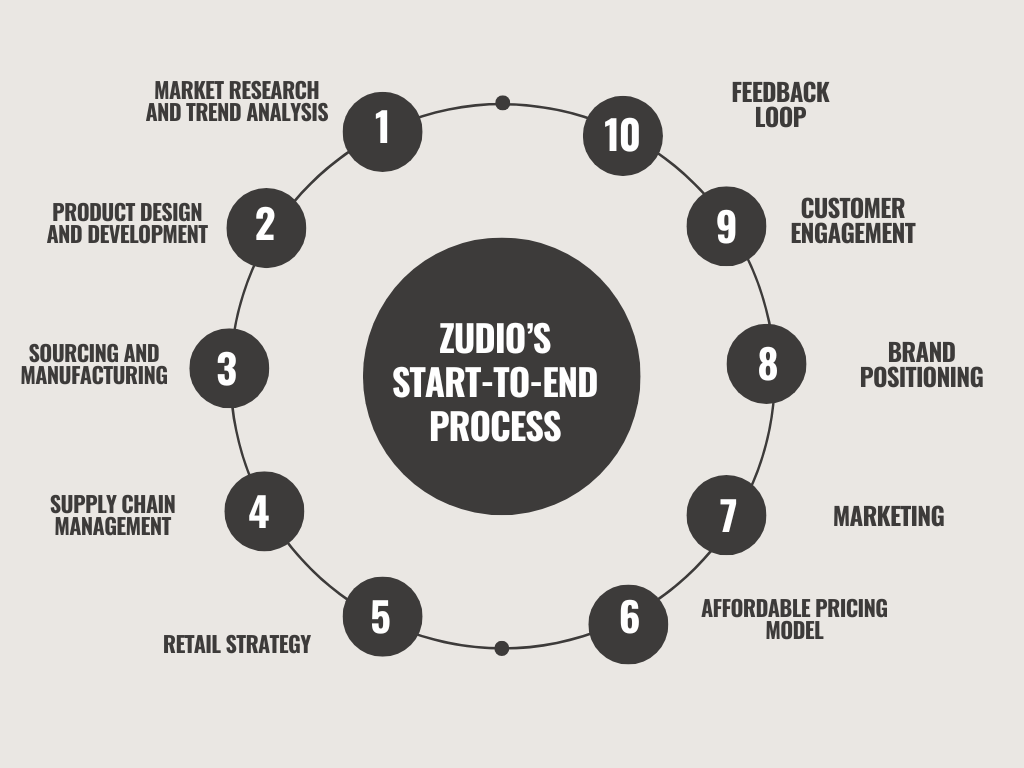Let’s begin with a small exercise to understand the customers Zudio caters to. Imagine you are a middle-class person with a monthly income of less than 30,000 rupees. The condition is, you need to manage all your monthly expenses while staying trendy. You have four brands to choose from for your shopping: Zudio, Max, Pantaloons, and H&M.
Important Note: All these brands offer similar types of trendy clothing with a quality range of 60-80%.
- Which brand would you choose for your everyday wear?
- Which brand would you choose for parties?
- Which brand would you choose for work?
- Which brand would you choose for sports?
- Which brand would you choose for rough and tough use?
- Which brand would you choose if you’re a student?
- Which brand would you choose if you want to stay trendy but on a budget?
Hahaha!! This may sound a bit manipulative, but if you pick Zudio as your answer to at least 3 of these questions, then congratulations! You’ve grasped the type of customers Zudio is targeting. If you choose Zudio for 2 or less questions, this blog will help you understand customer behaviour and give you a reason why Zudio’s brand is gaining strength every day in India. Let’s dive in.
Understanding Zudio
Let’s rewind to the period before the pandemic when fast fashion was booming. International brands like Zara and H&M were dominating the metro cities, catering to affluent customers. During this time, the middle-class customer’s fashion choices and price preferences were largely overlooked. A person from a tier 2 or tier 3 city had just two options: buy from premium brands at high prices or settle for unattractive stock from local stores that lacked style and quality. This is when a new player entered the scene — ZUDIO.
Trent Limited, a TATA-owned company, operates in the retail space. It owns brands like Westside, Zudio, Utsa, Misbu, and more. With extensive experience running brands like Westside, Trent had a deep understanding of the Indian market and its customers. They identified a significant gap in the market and launched Zudio in 2018 with just 7 stores. Fast forward to 2025, and Zudio now boasts over 545 stores across India in various cities and towns.
Zudio’s Business Model
FOCO Strategy:
There are several franchise models, such as COCO (Company-owned, Company-operated), FOFO (Franchise-owned, Franchise-operated), and FOCO (Franchise-owned, Company-operated). Zudio uses the FOCO model, meaning the store is owned by a franchise, but the brand manages the day-to-day operations. The franchise owner invests in setting up the store, covering logistics, assets like land, devices, and interior infrastructure. Meanwhile, Zudio takes care of inventory management, supply chain, staffing, and marketing.
This model allows Zudio to gather valuable data and stock clothing tailored to the local market while ensuring consistent quality across all stores. By maintaining this control, Zudio provides a seamless and reliable customer experience, boosting its credibility and helping it understand its customers better.
The Power of Location:
You might wonder, “Why is location so important for Zudio when it’s affordable, and people can travel some extra kilometers to buy?” You’re right in some ways, but for a brand to scale and outpace competitors, high foot traffic is crucial. A wrong location can stunt growth and limit reach.
Zudio doesn’t set up stores in expensive areas. Instead, it focuses on high-traffic locations near colleges, offices, and fashion-conscious young demographics. This strategy has allowed Zudio to earn between 12,000 – 18,000 rupees per square foot, well above the industry average of 8,000 – 12,000 rupees. Additionally, Zudio has successfully penetrated tier 2 and tier 3 cities, widening its customer base.
Supply Chain and Inventory Management:
Now, you might be wondering, “If Zudio is selling at such low prices, don’t they need their own manufacturing plant?” Not quite. Zudio designs its clothes in-house but outsources production to large manufacturers. This reduces them the cost of setting up and running a manufacturing plant. They place bulk orders, keeping costs low while maintaining quality.
When customers visit a Zudio store, customer knows that particular items will sell out quickly due to the attractive pricing. This encourages immediate purchases and minimizes the risk of dead stock. Zudio refreshes store stock every two months to keep the store experience fresh and exciting. Since inventory turnover is high, wastage is minimized, and there’s less need for clearance sales.

Customer-Centric Approach:
Rather than spending heavily on advertising, Zudio focuses on word-of-mouth marketing and reinvests those savings into improving the customer experience. From product design and pricing to order fulfillment, every decision is carefully considered to balance affordability and style. Zudio is building its brand for the customer — for the aspiring Indian.
Conclusion:
The fast fashion industry is relatively easy to enter, requiring low investment to start, but achieving success is challenging. With the industry becoming increasingly volatile and trends constantly shifting, staying relevant is crucial. In a space where international brands have a strong foothold, Zudio’s rise as an Indian brand is something aspiring entrepreneurs should study closely.
thehustleweek.com is here to remind you every week that you’re not alone on this journey. Don’t waste another year stuck in imagination; start taking action today. Each week, theHustleWeek aims to unlock your potential by providing valuable insights that inspire and empower you to think differently.
As a community of hustlers, theHustleWeek aims to positively impact your life. If you found this article useful, please share it and leave your thoughts in the comments section. Your feedback encourages us to create more curated content. Feel free to explore our other blogs as well.






Really informative!!!